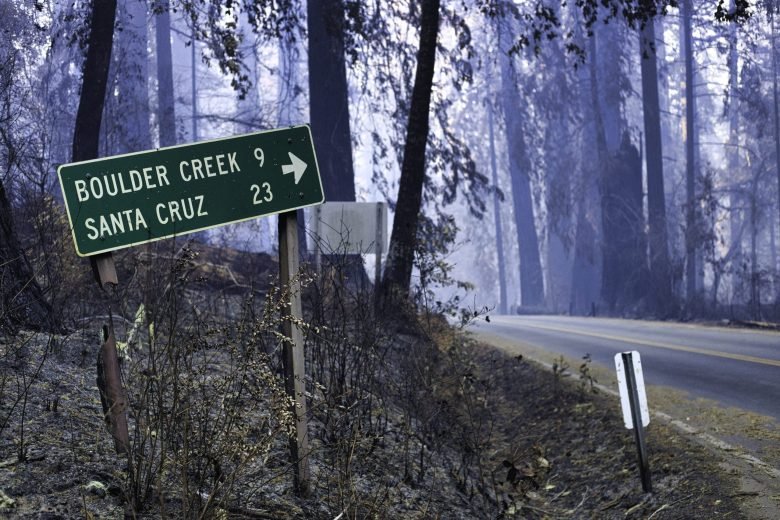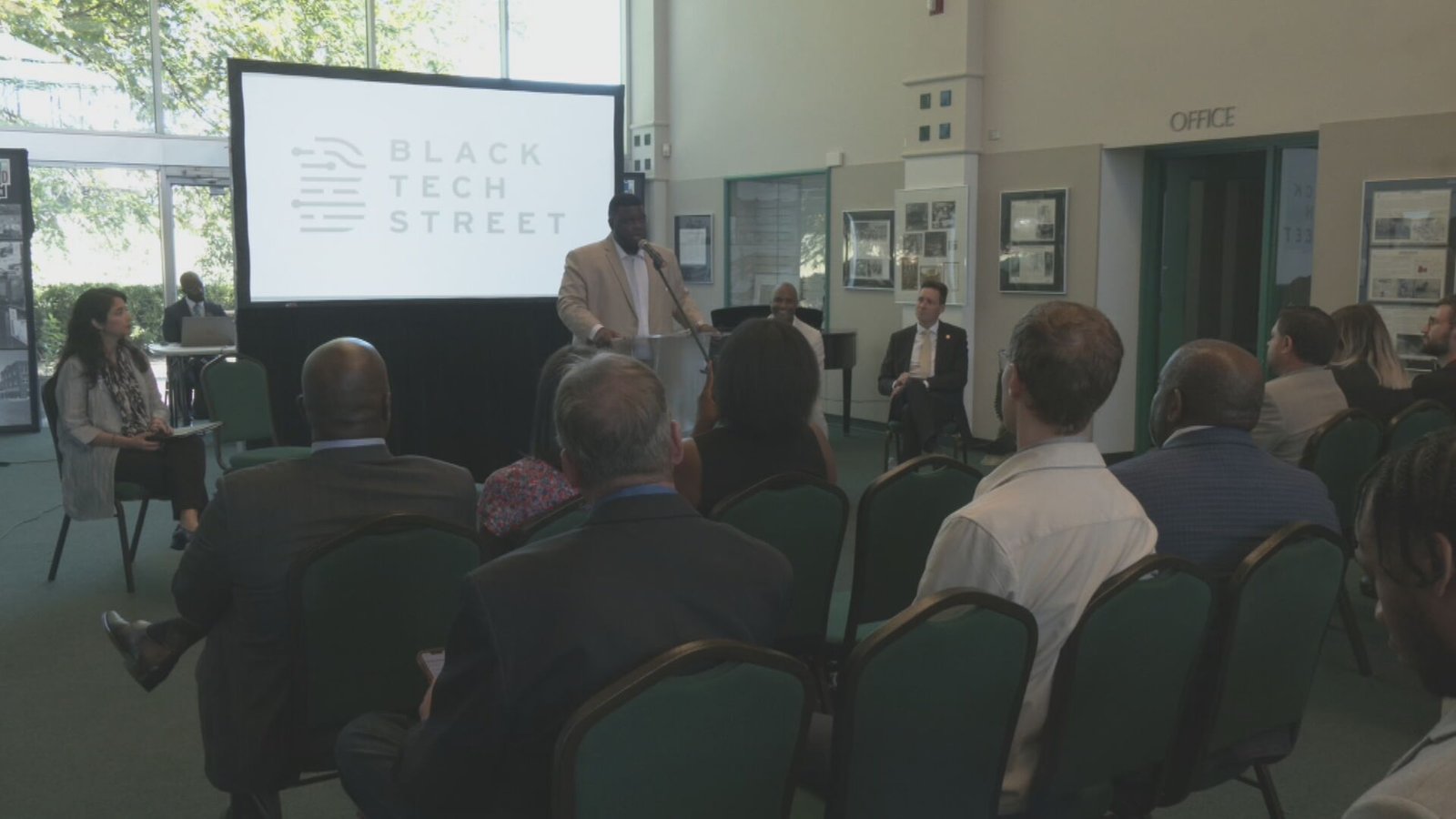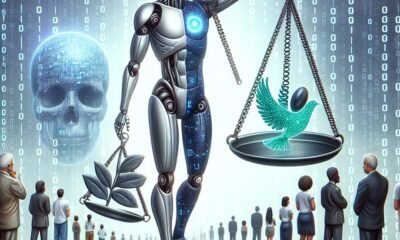Tools & Platforms
The Rise of Intelligent Crushing: AI Applications in Mobile Crusher Technology

The crushing industry stands on the brink of a technological revolution, where artificial intelligence is transforming mobile crushers from simple rock-breaking machines into sophisticated, self-optimizing systems. No longer confined to mechanical crushing alone, these intelligent units now analyze, adapt, and improve their performance in real-time, ushering in an era of unprecedented efficiency and precision. This evolution couldn’t come at a more critical time, as aggregate producers face mounting pressure to increase output while reducing energy consumption and environmental impact.
What makes AI-enhanced crushing particularly revolutionary is its ability to address the inherent variability of feed material—the traditional Achilles’ heel of crushing operations. By continuously monitoring and adjusting to changes in rock hardness, size distribution, and moisture content, intelligent track crushers maintain optimal performance regardless of material inconsistencies. The implications extend far beyond operational efficiency, promising to reshape everything from maintenance schedules to final product quality across the aggregates sector.
Self-Learning Crushing Algorithms
Modern AI-powered crushers employ neural networks that learn from every ton of processed material, gradually refining their crushing patterns to maximize throughput while minimizing wear. These systems don’t just react to current conditions—they predict upcoming material characteristics based on historical data and adjust parameters preemptively. Some advanced models can even recognize subtle vibration patterns that indicate impending mechanical issues, allowing for proactive maintenance before failures occur.
The true genius lies in the systems’ ability to balance competing priorities autonomously. Should energy efficiency take precedence over product shape today? Does the next project require particular attention to fines reduction? Operators simply define their objectives, and the AI orchestrates the complex interplay of speed, stroke, and pressure to deliver optimal results. This adaptive capability proves particularly valuable when processing blended or recycled materials with inconsistent properties.
Vision-Enhanced Material Analysis
Cutting-edge mobile crushers now integrate high-resolution cameras and spectral imaging that analyze every scoop of feed material before it enters the crushing chamber. This visual intelligence goes far beyond basic size detection—it identifies mineral composition, predicts crushability, and even spots contaminants that could damage equipment or compromise final product quality. The system automatically adjusts feed rates and crushing parameters based on this real-time material profiling.
Some pioneering units have taken this further with cross-belt analyzers that continuously monitor output gradation. This closed-loop system makes micro-adjustments throughout the operation, ensuring product consistency that would be impossible through manual control. For asphalt and concrete producers who demand precise aggregate specifications, this capability eliminates costly over-processing while guaranteeing on-spec material from the first ton to the thousandth.
Predictive Optimization Across Operations
The most advanced AI crushing systems extend their intelligence beyond individual machines to optimize entire mobile crushing circuits. By analyzing data from primary, secondary, and tertiary units simultaneously, these systems dynamically redistribute processing loads to prevent bottlenecks. They can predict when a screen will blind or when surge piles will empty, adjusting upstream operations to maintain seamless material flow.
This holistic approach yields surprising benefits in fuel efficiency and wear part longevity. One European aggregate producer reported a 22% reduction in diesel consumption and a 40% increase in liner life after implementing AI coordination across their three-stage mobile crushing plant. The system’s ability to “learn” the specific characteristics of each quarry’s geology means these improvements compound over time, with the AI developing site-specific strategies no human operator could replicate.

As mobile crushing enters this new intelligent era, the technology is redefining what’s possible in aggregate production. No longer passive tools, these AI-enhanced crushers have become active partners in operational decision-making, capable of insights and optimizations that elude even experienced crews. While the industry is only beginning to scratch the surface of these capabilities, early adopters are already seeing transformative results—higher quality products, lower operating costs, and unprecedented consistency across variable feed materials. The future of crushing isn’t just mobile; it’s perceptive, adaptive, and relentlessly efficient.
Tools & Platforms
A Boulder Creek tech startup is using drones and AI to detect the next big wildfire

Quick Take
After the CZU fire devastated their community, a group of Boulder Creek residents, firefighters and engineers began meeting regularly to figure out how to better protect their homes and neighbors from future fires. Their solution, an AI-powered system of sensors, cameras and drones, joins a growing wave of technology aimed at taming California’s intensifying fire seasons.
What began as weekly meetings between Boulder Creek residents and local firefighters outside the Brookdale Lodge in the months following the CZU Lightning Complex Fire has evolved five years after the blaze into a pioneering wildfire detection system that could transform how communities respond to fire threats.
Their creation: a network of artificial intelligence-powered sensors that scan for smoke every minute and alert both residents and emergency services to the early signs of a blaze, paired with autonomous drones that can deliver fire suppressant to remote locations.
The startup behind this technology, Ember Flash Aerospace, emerged from conversations between Lee Kohlman, a NASA Ames Research Center employee who was living in Boulder Creek when the CZU fire hit, and Joseph Norris, a former Coast Guard member with experience in software and driverless cars, who traveled to Silicon Valley frequently for work. Along with local firefighters and tech-savvy neighbors, Kohlman and Norris identified a critical gap in wildfire response: the need for faster detection in those crucial first minutes when a small fire can still be contained.

Ember Flash joins an increasingly crowded field of new technology that is reshaping the fight against wildfires. Researchers, governments and the private sector are racing to detect blazes earlier and stop them before they spread using tools like sensors, satellites and artificial intelligence to identify the lightning strikes most likely to ignite fires, or detect the earliest whispers of smoke. Private companies are also experimenting with autonomous helicopters, smart sprinkler systems and mobile water delivery to help battle blazes as hotter, drier conditions fuel larger fires.
The growing frequency and intensity of wildfires prompted XPrize — a nonprofit-run competition program that offers millions of dollars in prize money to entrepreneurs to solve big problems through technology — to launch a new challenge focused on wildfires in 2023.
“XPrize is a California-based organization and so many of our staff, sponsors, board members have experienced destructive wildfires so this was both a personal challenge for many as well as a global challenge,” said Andrea Santy, program director for the new XPrize Wildfire contest.
Ember Flash was named a semifinalist in the XPrize Wildfire competition. The winners stand to make as much as $3.5 million when they’re announced in 2026. Finals testing is scheduled for July of next year.
From the ashes of CZU
For Norris, Kohlman and their colleagues, pairing Silicon Valley technology with wildfire fighting seemed like a no-brainer.
Kohlman and his wife had been living in Boulder Creek for about a year when the fire broke out. The couple had moved from Virginia to take jobs at the Lucile Packard Children’s Hospital at Stanford University and NASA’s Ames Research Center. When lightning storms happened on Aug. 16, 2020, Kohlman didn’t think much of it at first; as a Midwest native, he and his wife were used to it, even if it was a little abnormal for California. It wasn’t until the next day that they heard about a potential fire, but he wasn’t too worried. Then his wife received a notification on her phone and called him from work, and he stepped outside to look.
“I saw an orange glow to the northwest, just a couple of ridges over,” he recalled. “We had to quickly figure out what to do next.”

He gathered the couple’s two dogs and two cats and packed a few bags. He and his wife decamped for a short-term rental on Foster City, where they’d end up staying for six weeks. For an agonizingly long time, they weren’t sure if they’d have a home to return to. Their house survived the blaze, but they came back to a forever-changed community.
In those weeks and months after the fire, Kohlman spent a lot of time taking photographs of burnt buildings and trees to get a clearer picture of the fire’s extensive damage. He spoke with neighbors about their experiences with the CZU Lightning Complex, including those who’d lost their homes. He felt helpless and wanted to change that. So about six months after the fire, he put a call out on a Facebook page for Boulder Creek neighbors, looking for other people to discuss their experience and what had happened — everything from how they found out about the fire, to how they felt going through this experience, and what the rebuilding process would entail.
A group of residents, including several local firefighters, met up and then kept meeting weekly, with topics ranging from community recovery to how wildfires are fought. Kohlman invited his friend and former neighbor, Joseph Norris, to attend.
“We started having some little meetings,” said Norris. “Our first meeting was at the Brookdale Lodge at the picnic tables outside. We weren’t thinking about much more than what could be done, ‘How can we help others do more?’”
For Norris, who started his career in the Coast Guard, emergency response had long been an interest. He’d been a volunteer firefighter in his younger years before getting into software, working for companies focused on everything from software for nonprofit organizations to artificial intelligence and driverless cars. He and Kohlman befriended each other when they were both living in Virginia, and the pair had long talked about possible business ideas.
“There were a lot of people in Boulder Creek who had a lot of skills and wanted to do something [in the wake of the fire],” said Norris. “We felt like we were way too close to Silicon Valley to not be using a little technology for this.”
As the group discussed barriers to response, such as being located in rural areas where homes are farther apart, and current firefighting approaches, a key challenge emerged: the need to speed up wildfire detection.
“Those first few minutes are really important, when [a fire is] small, just ignited,” said Norris. “If you can get to those quickly and put them out, you can stop a wildfire.”
‘New era in megafires’
Fighting fires in rural, often rugged terrain is complicated and becoming harder. Fires like the CZU Lightning Complex are fast-moving and can leap from one place to another, faster than a car can drive, wildfire experts say.
California has been in a “new era of megafires” for about a decade, driven by factors including climate change, buildup of dry brush and dead leaves, and the fact that more people now live in wildfire-prone areas, said Chris Field, a professor at Stanford University whose research focuses on climate change and the impacts of wildfires.
Even for experienced firefighters, these blazes are incredibly challenging.
“California has some of the most sophisticated and well-trained firefighters,” Field said. “It’s not that we don’t have the people [with skills] – it’s that these fires are getting more intense and harder to fight, which is where new technologies can come in.”
Earlier notifications could also help residents make better preparations in the event of a fire, such as asking a neighbor to pick up your pets for you rather than driving back to Boulder Creek from your job in Santa Cruz, said Norris.
Statewide, California’s evacuation alert systems came under scrutiny following fires throughout the summer of 2020. As the Associated Press reported, notifications were sometimes spotty or slow, and some residents said they never received them. Santa Cruz County leaders launched a new and improved alert and warning system, CruzAware, in 2023, driven in part by the lessons learned from the CZU Lightning Complex Fire.
Even with upgraded warning systems, gaps remain; systems vary by region, phone alerts can be ignored as robocalls, and sometimes alerts still come too late for residents to return home to gather their belongings before evacuating.

To help solve these problems, Ember Flash developed Vigilant Detect, which essentially involves special sensors that combine advanced cameras and AI. The cameras can capture images every minute and the system then uses AI to analyze those images in real time for early signs of wildfire smoke. The idea is that these monitors could be installed in neighborhoods and Firewise communities, groups of neighbors who’ve come together to reduce wildfire risks in the community. Property owners and emergency service agencies could then receive notifications through an app when the system detects a wildfire.
The company is currently doing pilot programs in a few sites in Santa Cruz County and other fire-prone areas, including residential neighborhoods, municipalities and local vineyards, Norris said. The Ember Flash team works on site to identify the best locations for the sensors and ensure everything runs smoothly. These tests help the company refine its detection algorithms, test the durability of the hardware and the product design in real-world conditions while also collecting feedback about the user experience. Ember Flash is looking for more property owners interested in joining its pilot program.
Norris said the company expects to be able to start selling their products to neighborhood associations and fire protection districts next year.
Vigilant Detect isn’t the only project the company’s working on. It’s also working with Dutch company Kitepower to mount Ember Flash’s AI-powered smoke-sensing devices on Kitepower’s high-tech kites that generate energy from wind. The idea there is that these kites could be flown into remote, windy places to detect wildfires while they’re still just wisps of smoke.
Another effort is using drone technology for both gathering real-time data about existing fires and rapidly helping to put them out. The company’s Vigilant Raptor is an autonomous drone that can quickly navigate into hard-to-reach areas to dispense fire suppressant. These could be owned and used by private citizens, but Norris said the company envisions fire protection districts (the local government entities responsible for fire prevention and suppression in a specific geographic area) as the primary customers for these devices.
“Our goal is to make them inexpensive, make them smart and make them fast,” Norris said of the company’s products.
Eyes on the XPrize
The company’s Vigilant Raptor is currently a semifinalist in the XPrize Wildfire competition, in which teams around the world are competing in two different tracks to transform how wildfires are detected, managed and fought.
The competition is divided into two tracks, space-based detection and intelligence and autonomous wildfire response, according to Santy. From more than 150 submissions, 49 teams were selected to advance and in 2025, semifinals testing began.
Ember Flash was one of 15 semifinalists in the intelligence and autonomous wildfire response category and it now moves on to finals testing, which is slated for July 2026. The company will have to demonstrate to the contest’s judges that within 10 minutes, it can autonomously detect and suppress a high-risk fire in a 621-square-mile, environmentally challenging area.
“The competition kind of kicked us into a slightly different route,” Norris said. “It kicked our suppression efforts into high gear.”
While the Kohlmans have since moved back to their native Ohio, Ember Flash Aerospace remains firmly rooted in Boulder Creek. Its local team members include Zach Ackemann, a former Felton firefighter who now runs the company’s business operations, and Steve Lindsey-Guerrero, a deputy fire chief in Palo Alto who serves as a technical expert. In addition to the San Lorenzo Valley, the company also has an engineering team in Oklahoma.
So far, Ember Flash has been funded by investments from its founding team and early employees, but company leaders said they’re also looking for investors and funding to help them scale.
For Kohlman and Norris, Ember Flash is now their full-time job, and both spend a lot of time in Santa Cruz County as testing, prototyping and development continue, with pilot programs underway. Involving community members to test out their products is a key part of the company’s efforts and harkens back to the conversations that inspired Ember Flash in the first place – giving residents a way to help out with efforts to improve wildfire notification and response.
“We really want to empower them to be part of the solution,” Kohlman said of community members and non-firefighters. “People want to help. If a lot of people do a lot of small things, it can make a big difference.”
Have something to say? Lookout welcomes letters to the editor, within our policies, from readers. Guidelines here.
Tools & Platforms
The Board’s Playbook for AI: Strategy, Tech, and Culture

The Gist
- AI is a board-level mandate. Boards must go beyond ROI and ask if the organization is strategically, technically and culturally ready for AI at scale.
- Strategy, tech and culture matter equally. Customer experience leaders need forward-looking bets, the right tools and ownership and a workforce empowered to adapt.
- Readiness defines leadership. True AI advantage comes from holistic readiness, not isolated pilots—boards that wait risk narrowing their opportunity.
AI is now central to strategy, not just operations. But many boards still lack a clear lens to evaluate its impact? And as AI adoption accelerates, boards and executive teams are grappling with an essential question: how do we know it’s working?
Evaluating AI impact isn’t just about tracking ROI or measuring model accuracy. It’s about understanding whether the organization is truly ready — strategically, technically and culturally — to embrace AI at scale. The real opportunity lies in turning AI from isolated pilots into a sustained source of advantage.
So where should business leaders start? Let’s break it down across three critical areas: strategic awareness, technical aptitude and cultural readiness.
Table of Contents
Strategic Awareness: Are You Seeing the Big Picture – and Acting on It?
To lead with AI, boards should first ask: do we have a forward-looking, competitively informed view of how AI is reshaping our industry? If the answer is unclear, it may be time to revisit strategic priorities.
High-performing organizations place bold, forward-looking bets. That might mean investing in customer experience transformation, rethinking core product offerings or experimenting with entirely new business models enabled by AI.
Importantly, this isn’t a one-time strategy session. Many leading organizations systematically monitor AI moves by competitors, startups and emerging players. They use AI to help set strategy and envision opportunities, along with keeping an eye on how hyperscalers, research labs and ecosystem partners are evolving and act accordingly.
Technical Aptitude: Do You Have the Tools, Talent and Infrastructure to Execute?
Even the best AI strategy can stall if the technical foundation isn’t there. Boards should assess: does our organization have the infrastructure, data, and leadership to build and scale AI responsibly?
This isn’t just about hiring more data scientists. It’s about aligning cloud, data and app platforms to support real-time decision-making, automation and agent-based systems. It means building AI capabilities that are unified, governed and reusable – think modular pipelines, agents and APIs that scale across use cases.
Another key question: Who owns AI execution?
In top-performing companies, AI is not confined to an innovation lab. Ownership is shared across business and technology functions. And more importantly, those leaders are technically fluent in the sense that they understand how AI works and feel empowered to act.
A final, often overlooked question: what’s our plan to manage technical debt?
Legacy systems, siloed data and outdated workflows can quietly sabotage AI progress. Modernization efforts should run in parallel with AI deployment, otherwise, progress often stalls before it scales.
Cultural Readiness: Is the Organization Willing – and Able – to Change?
Perhaps one of the most underestimated components of AI success is culture. While AI requires new tools, it also demands a completely new mindset. One that encourages exploration, experimentation and rapid iteration.
Boards should ask: is our leadership and workforce ready to continuously adapt and adopt AI?
An innovative culture isn’t built overnight. It requires visible AI champions who are credible, resourced and empowered to lead. It also means investing in AI literacy across all levels of the business, not just in data teams.
Even more than upskilling, this is about embedding AI understanding into fundamental decision-making, operations and even customer conversations. Everyone, from frontline employees to the C-suite, should have a baseline understanding of what AI is and what it’s not.
Finally, cultural readiness means staying connected to the broader ecosystem, which includes startups, venture capital firms, academia and research communities. This is because no single company can build the future of AI alone.
Related Article: Your Missed Opportunity in Customer Experience Culture
A New Mandate for AI Leadership
The boardroom conversation around AI is shifting. It’s no longer just about “should we invest?” but instead, it’s about “are we investing wisely – and are we ready for what’s next?”
True AI leadership often means looking beyond isolated use cases to evaluate readiness holistically. It requires clarity of vision, alignment across the enterprise and the ability to act with urgency and intent. That means treating AI as a business-wide transformation and making sure the organization is structurally and culturally prepared to lead.
In a world increasingly shaped by intelligent systems, boards have a unique and timely opportunity to define how their companies lead. Wait too long, and the opportunity narrows. Asking the relevant questions is where companies should start, but it’s the actions that follow that can define their true AI leadership.
Learn how you can join our contributor community.
Tools & Platforms
Black Tech Street partners with NVIDIA to bring AI revolution to Tulsa

A new partnership between Black Tech Street and NVIDIA is setting the stage for a major leap in Tulsa’s innovation economy.
The organizations signed a Memorandum of Understanding to develop Greenwood, the site of the original Black Wall Street, into a national leader in artificial intelligence.
“This is going to have an incredible impact on Tulsa,” said Terrance Billingsley II, chief executive officer of Black Tech Street. “NVIDIA is the most valuable company in the world, leading the most important technological revolution in human history.”
The collaboration includes plans to train up to 10,000 learners, support local AI startups, and offer advanced technology resources, all aimed at driving economic growth in the Greenwood District and beyond.
Training 10,000 future innovators
A major part of the plan includes AI training programs designed to reach thousands of students, workers and entrepreneurs across the Tulsa region.
Black Tech Street will lead the creation of the Greenwood AI Center of Excellence, a project funded through Tulsa’s Tech Hub award from the U.S. Economic Development Administration. Of the 51 million dollars awarded to the Tech Hub, 10.6 million will go toward the AI center.
Training will be conducted in partnership with local schools and universities, including Langston University, Tulsa Community College and Oklahoma State University.
Educators will also have access to certification through the NVIDIA Deep Learning Institute University Ambassador Program, which provides cloud-based tools powered by NVIDIA GPUs.
Local economy at the core of the mission
“This is going to be a monumental situation and it is going to affect a lot of people on the ground,” Billingsley said. “The next step is getting NVIDIA integrated into the community, getting certain programs up and running for people to take advantage of, hosting different events, and trying to architect what the big play that is going to transform our local economy is going to be.”
The partnership aims to spark high-paying tech jobs and drive entrepreneurship in Greenwood. According to the agreement, NVIDIA will offer startups access to its Inception program, which helps early-stage companies grow with technology support and networking.
NVIDIA will also provide advanced computing resources, including access to GPUs and cloud platforms for local AI projects.
A collaborative vision with broad support
The agreement is not just local. It sets a foundation for future expansion across Oklahoma.
“Oklahoma is fast becoming a national leader in next-generation innovation, from AI to aerospace and beyond,” said U.S. Sen. James Lankford. “Whether it is in Tulsa or across the state, Oklahoma is proving that you do not have to be on the coasts to be on the cutting edge.”
Louis Stewart, NVIDIA’s head of ecosystem development, echoed that vision. “Our collaboration with Black Tech Street and the larger Tulsa ecosystem is helping prepare and equip all segments of the workforce to operate and sustain transformative technology that is building America’s future.”
Tulsa Mayor Monroe Nichols said he is excited to see the two organizations come together.
“NVIDIA and Black Tech Street are setting the stage for new jobs for Tulsans, and I am eager to see how this investment in innovation will open more doors of opportunity for our community,” Nichols said.
What comes next for Greenwood and beyond
Black Tech Street will continue working with partners, including Tulsa Innovation Labs, Microsoft, Langston University, Tulsa Economic Development Corporation and others to expand the program’s reach.
-

 Business6 days ago
Business6 days agoThe Guardian view on Trump and the Fed: independence is no substitute for accountability | Editorial
-
Tools & Platforms3 weeks ago
Building Trust in Military AI Starts with Opening the Black Box – War on the Rocks
-

 Ethics & Policy1 month ago
Ethics & Policy1 month agoSDAIA Supports Saudi Arabia’s Leadership in Shaping Global AI Ethics, Policy, and Research – وكالة الأنباء السعودية
-

 Events & Conferences4 months ago
Events & Conferences4 months agoJourney to 1000 models: Scaling Instagram’s recommendation system
-

 Jobs & Careers2 months ago
Jobs & Careers2 months agoMumbai-based Perplexity Alternative Has 60k+ Users Without Funding
-

 Education2 months ago
Education2 months agoVEX Robotics launches AI-powered classroom robotics system
-

 Funding & Business2 months ago
Funding & Business2 months agoKayak and Expedia race to build AI travel agents that turn social posts into itineraries
-

 Podcasts & Talks2 months ago
Podcasts & Talks2 months agoHappy 4th of July! 🎆 Made with Veo 3 in Gemini
-

 Podcasts & Talks2 months ago
Podcasts & Talks2 months agoOpenAI 🤝 @teamganassi
-

 Education2 months ago
Education2 months agoAERDF highlights the latest PreK-12 discoveries and inventions





















